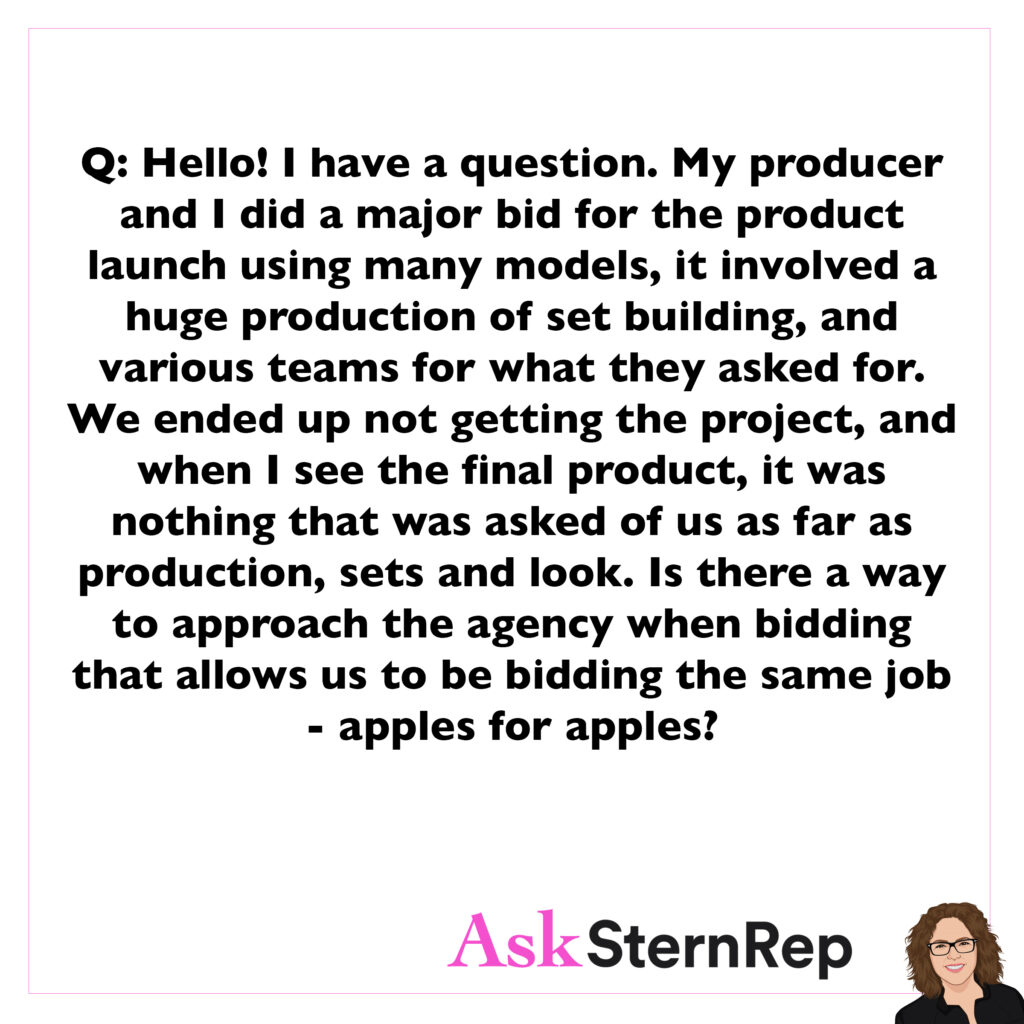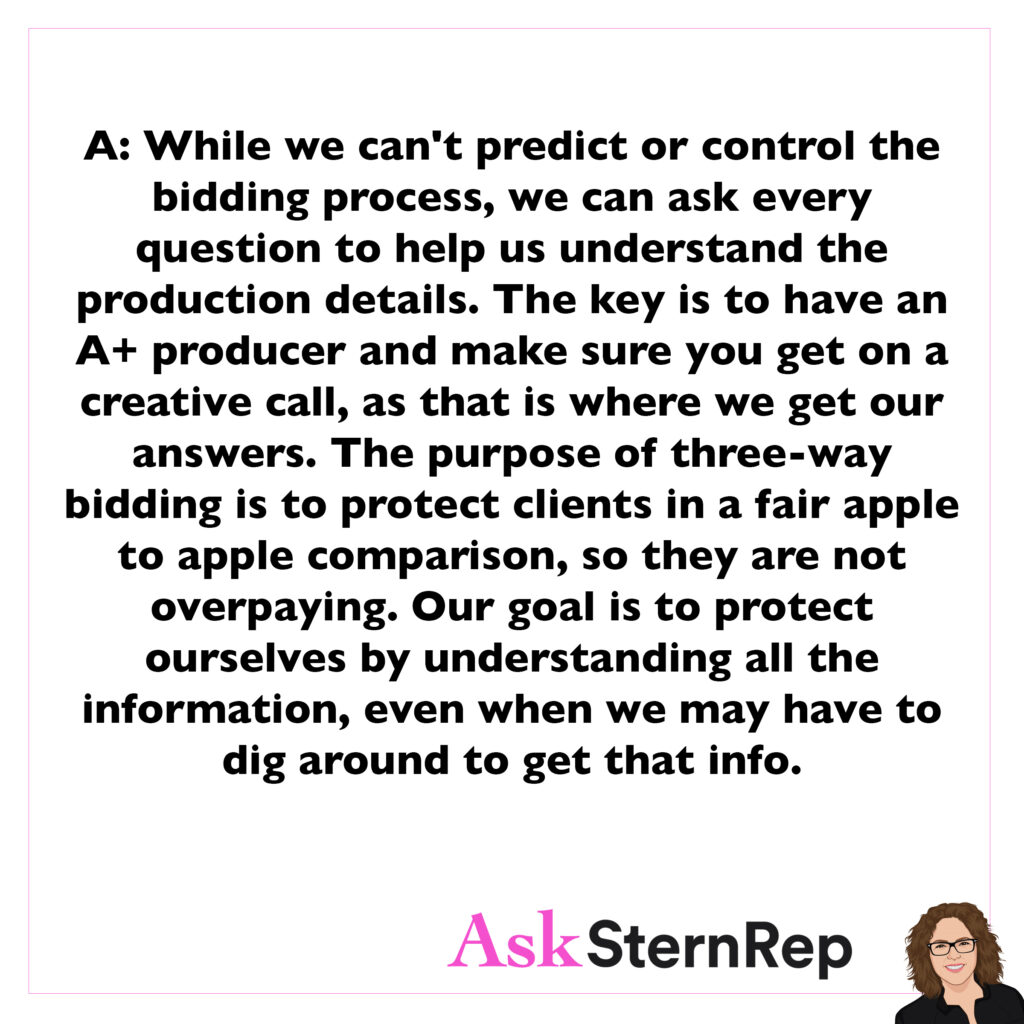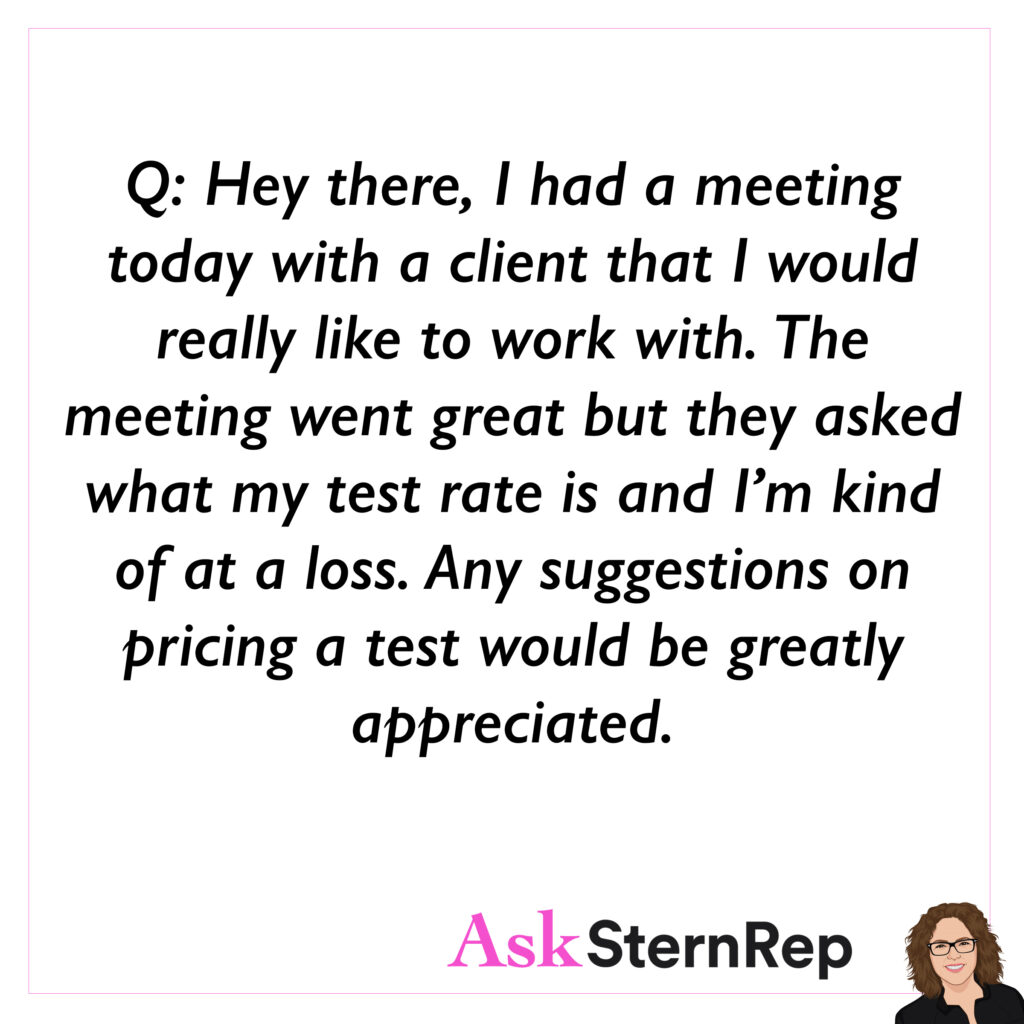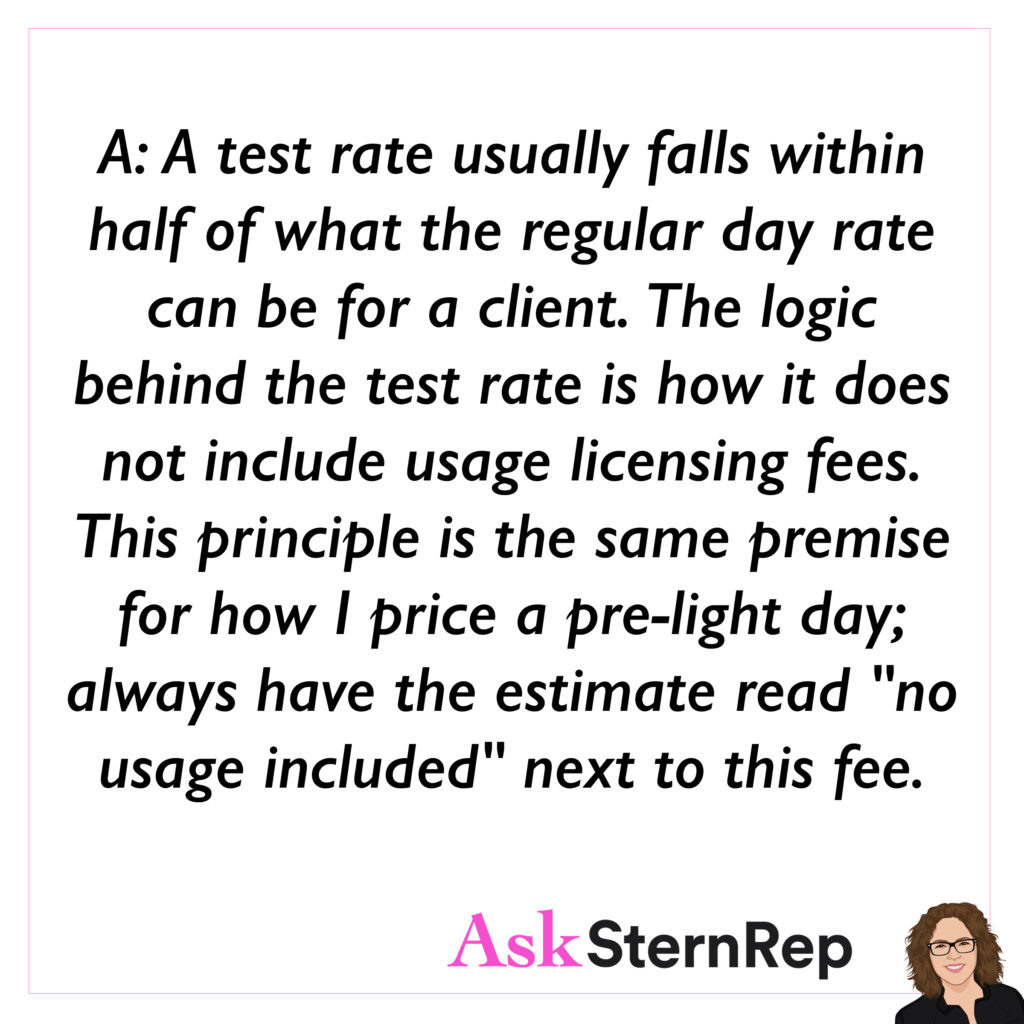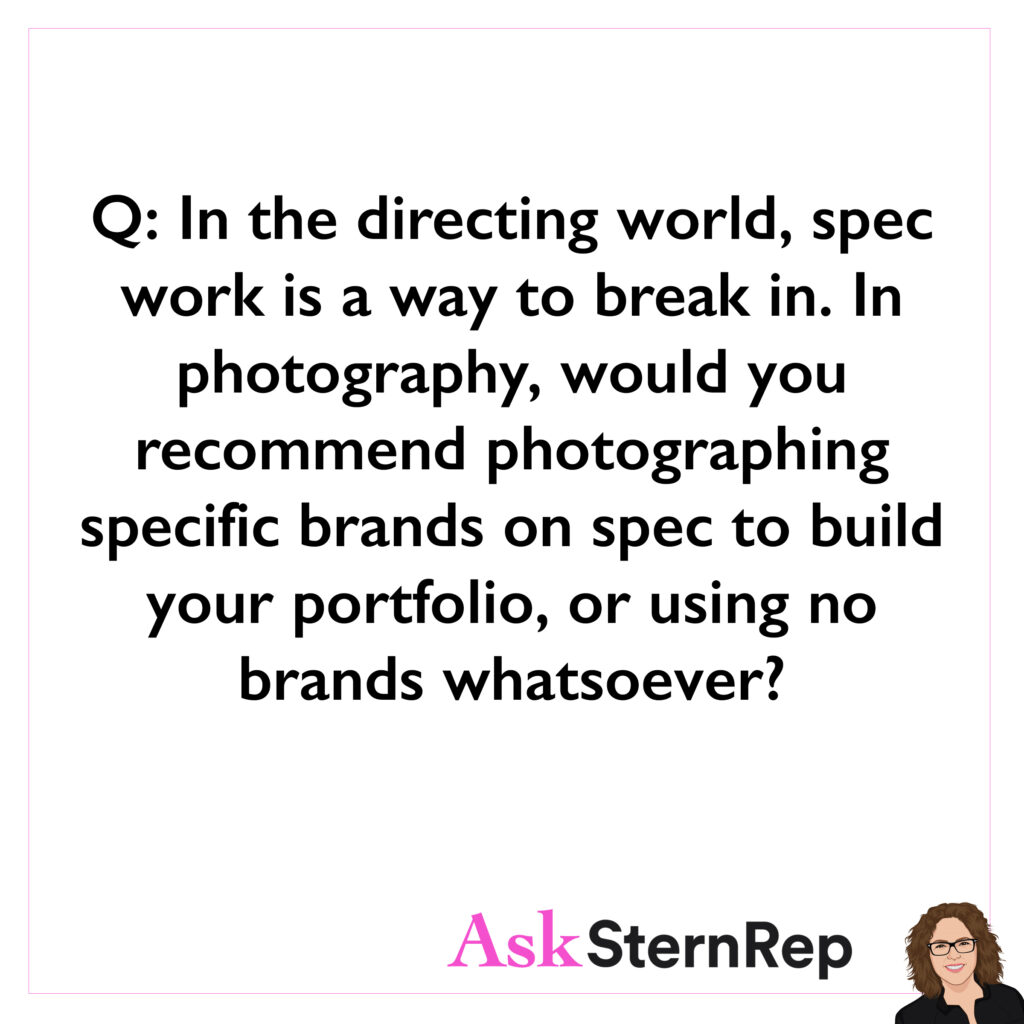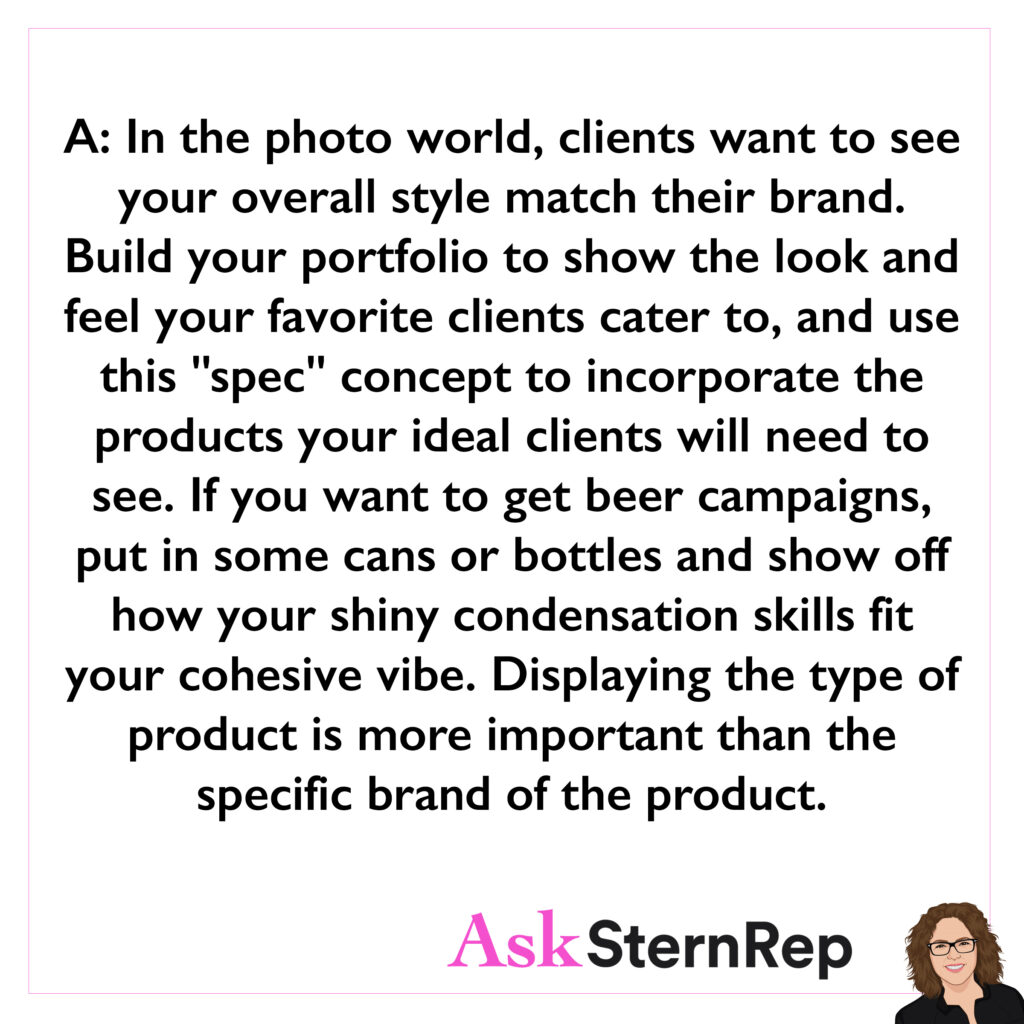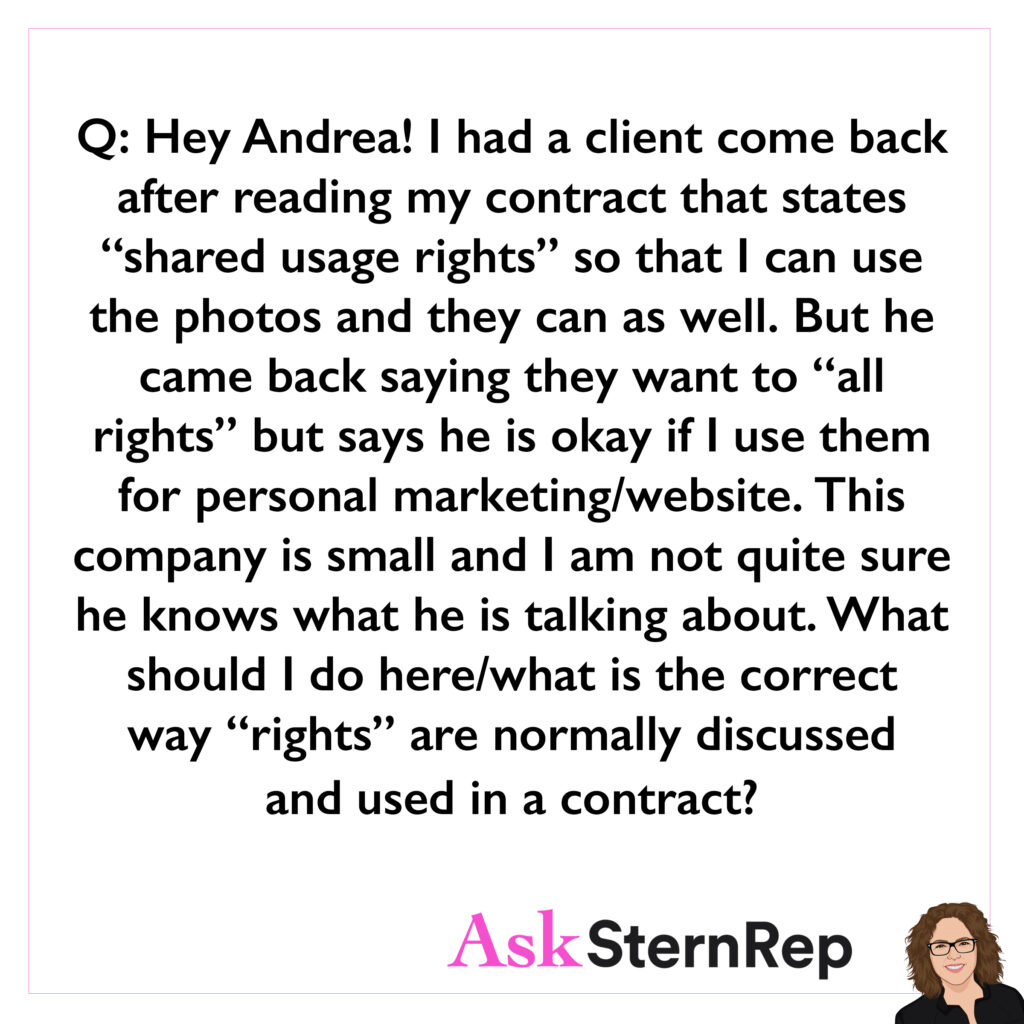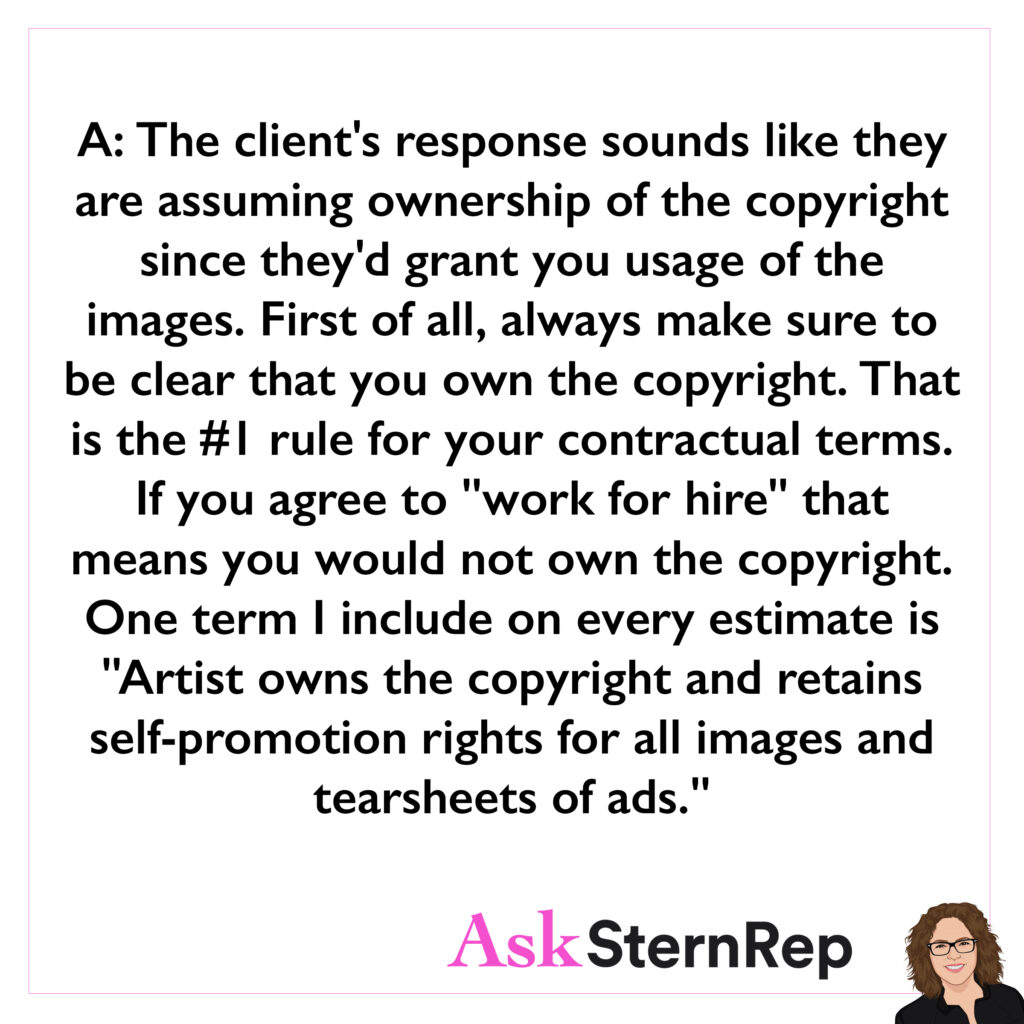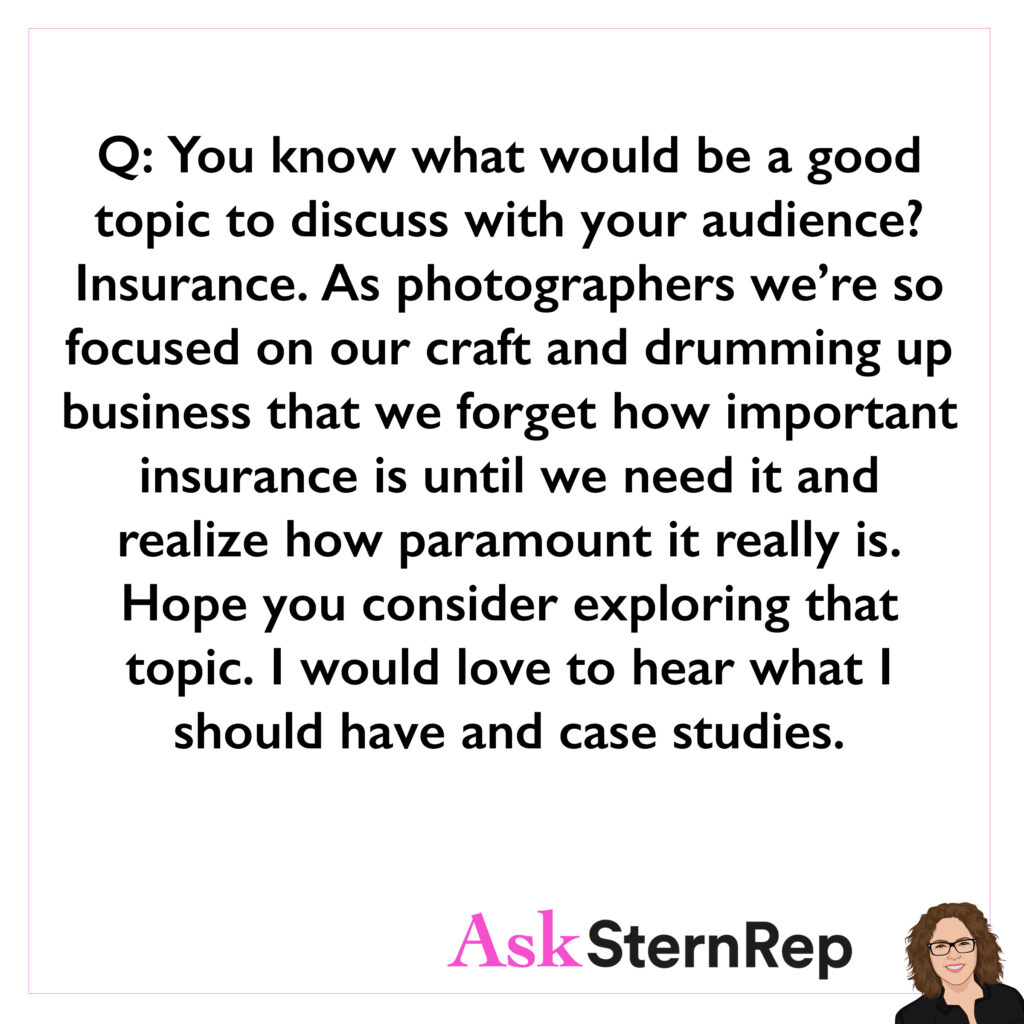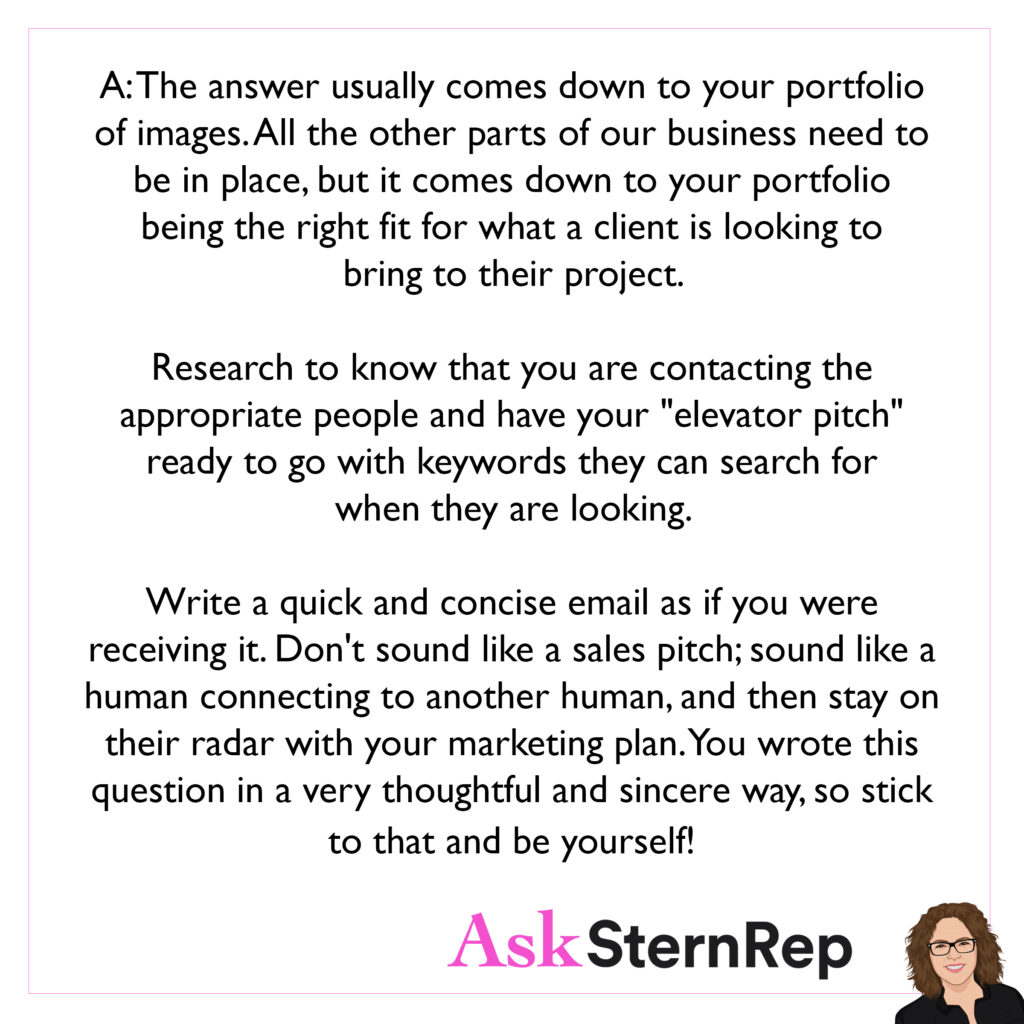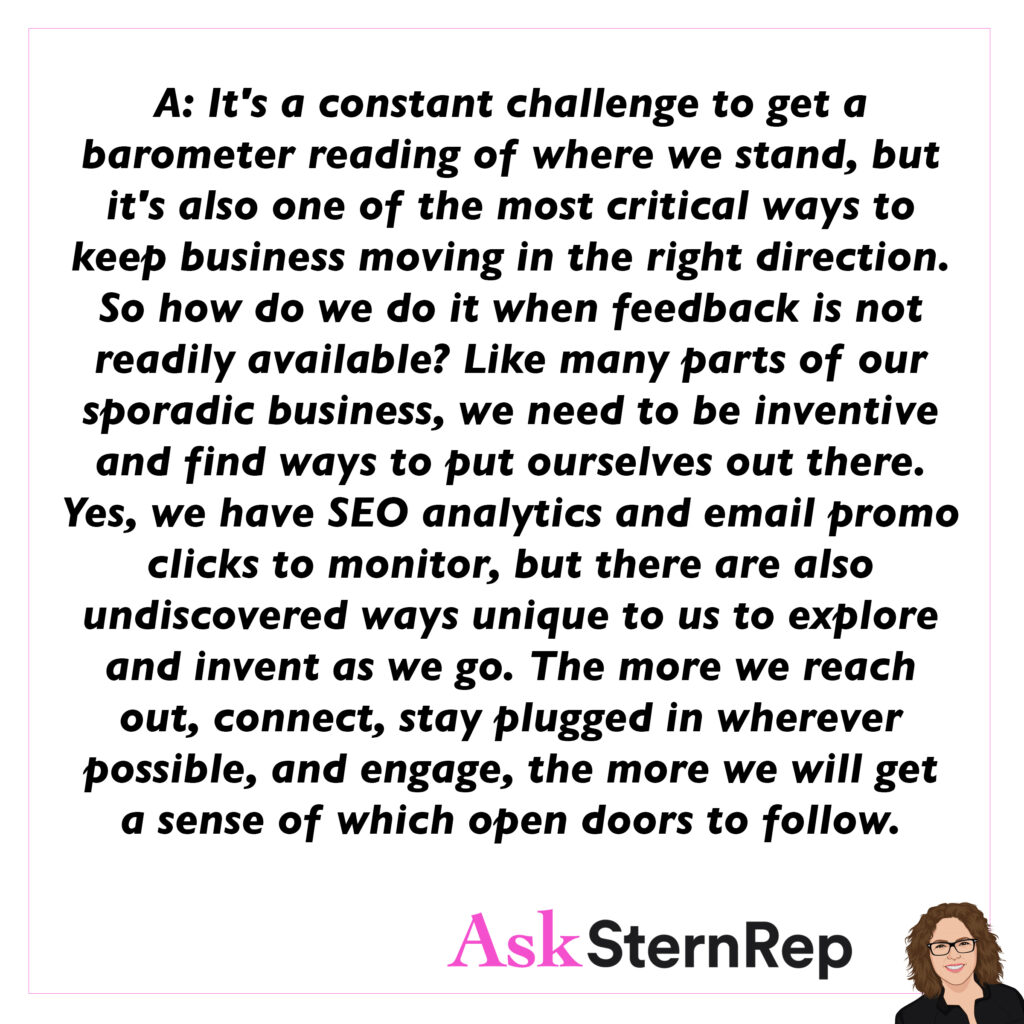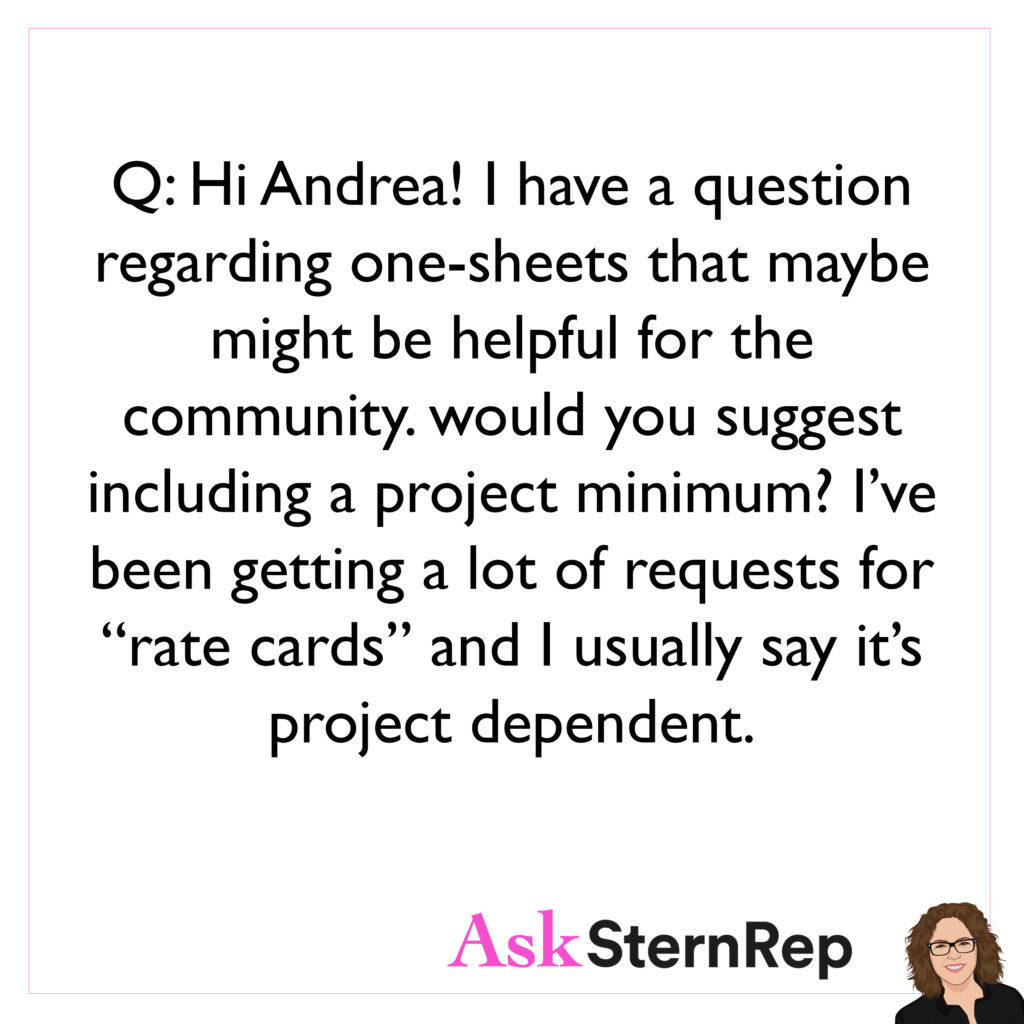
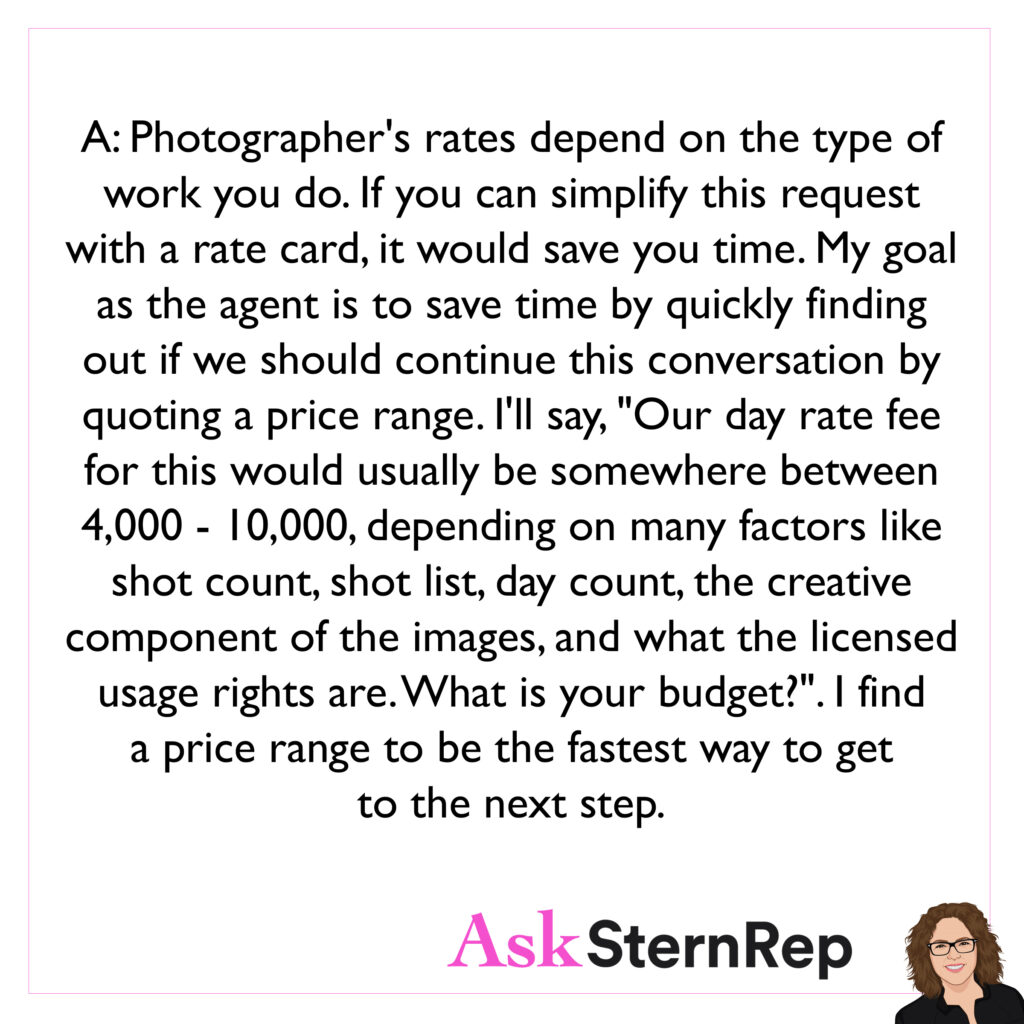
Q:
Hi Andrea! I have a question regarding one-sheets that maybe might be helpful for the community. Would you suggest including a project minimum? I’ve been getting a lot of requests for “rate cards” and I usually say it’s project dependent.
A:
Photographer’s rates depend on the type of work you do. If you can simplify this request with a rate card, it would save you time. My goal as the agent is to save time by quickly finding out if we should continue this conversation by quoting a price range. I’ll say, “Our day rate fee for this would usually be somewhere between 4,000 – 10,000, depending on many factors like shot count, shot list, day count, the creative component of the images, and what the licensed usage rights are. What is your budget?” I find a price range to be the fastest way to get to the next step.

